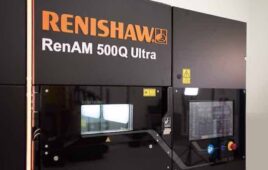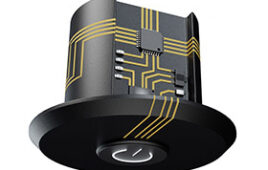Today, UL Chemical Safety and the Georgia Institute of Technology (Georgia Tech) announced a body of research that explored the impact of 3D printing on indoor air quality.
Following an in-depth, two-year research period with Georgia Tech, UL’s Chemical Safety found that many desktop 3D printers generate ultrafine particles (UFPs) while in operation. UFPs may pose a health concern since they are the size of nanoparticles and may be inhaled and penetrate deep into the human pulmonary system.
The research also revealed that more than 200 different volatile organic compounds (VOCs), many of which are known or suspected irritants and carcinogens, are also released while 3D printers are in operation.
“Following our series of studies – the most extensive to date on 3D printer emissions, we are recommending additional investments in scientific research, product advancement to minimize emissions, and increased user awareness so that safety measures can be taken,” Dr. Marilyn Black, Vice President and Senior Technical Advisor at UL, said.
In order to fully understand the impact of the chemical and particle emissions on health, Dr. Black advocates for a complete risk assessment that factors in dose and personal sensitivity considerations.
Many factors, including nozzle temperature, filament type, filament and printer brand, and filament color, affect emissions while extrusion temperature, filament material and filament brand were found to have the greatest impact on emission levels. However, there is currently very little marketplace information available to help users choose safer options.
According to Dr. Rodney Weber, the primary investigator of the research at Georgia Tech, “Studies have shown that fused deposition modeling (FDM) 3D printers designed for general public use emit high levels of ultrafine and fine particles. Preliminary tests with in vivo, in vitro and acellular methods for particles generated by a limited number of filaments showed adverse responses.”
The findings come at a time when this low-cost, compact and user-friendly emerging technology is increasingly gaining momentum in consumer, commercial, medical, and educational settings.
As the use of 3D printers in schools has become prolific, special care should be taken to minimize exposure of emissions to children who are the most sensitive among populations to environmental contaminant impact. The potential risks can be lessened by:
Operating 3D printers only in well-ventilated areas Setting the nozzle temperature at the lower end of the suggested temperature range for filament materials Standing away from operating machines Using machines and filaments that have been tested and verified to have low emissions.
Based on the scientific research conducted with Georgia Tech and further collaboration with third-party stakeholders, a UL/ANSI consensus standard for testing and evaluating 3D printer emissions has been developed. UL/ANSI 2904 is now available for review and comment, and the final standard will be ready in December 2018.
Two scientific research papers—”Characterization of particle emissions from consumer fused deposition modeling 3D printers” and “Investigating particle emissions and aerosol dynamics from a consumer fused deposition modeling 3D printer with a lognormal moment aerosol model,” have been published in Aerosol Science and Technology. Two additional papers are currently under review on the toxicity of 3D printer particles and plethora of chemical emissions.
Filed Under: 3D printing • additive • stereolithography, TEST & MEASUREMENT




